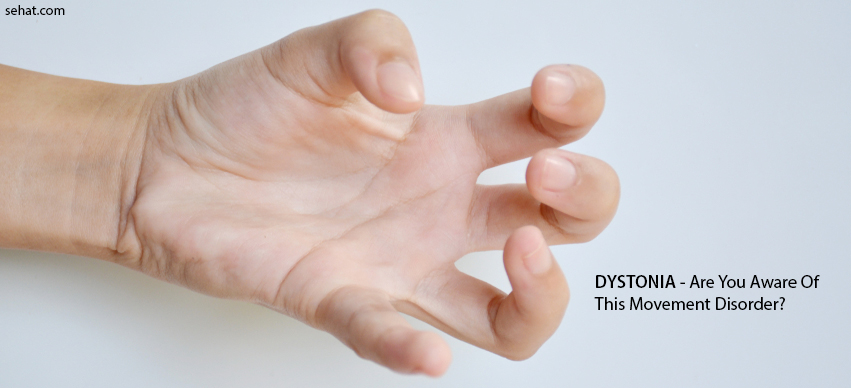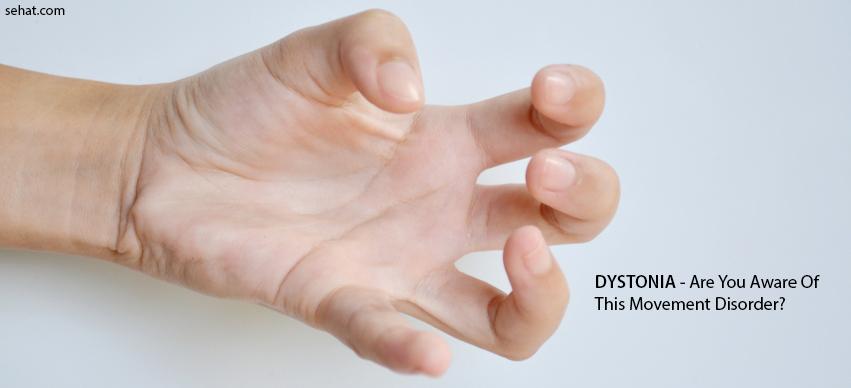Nanoparticle Therapy – An Emerging Cancer Treatment
5 Min Read


Many people in the world would not have heard of Dystonia, a not-so-common disease. Dystonia is a movement disorder in which a person's muscles contract uncontrollably. The contraction causes the affected body part to twist involuntarily, resulting in repetitive movements or abnormal postures. Dystonia can affect a muscle, a group of muscles, or the entire body.
Dystonia is often described as a movement disorder. It is a state of abnormal muscle tone resulting in muscular spasm and abnormal posture, typically due to neurological disease or due to the side effect of drug therapy.
It is characterized by persistent or intermittent muscle contractions that cause abnormal, often repetitive, movements, or postures. The movements are usually patterned and twisting, and maybe quite similar to a tremor. Dystonia is often initiated or worsened by voluntary movements, and symptoms may pass on to the adjacent muscles.
Dystonia may affect a single body area or be generalized through a number of muscle groups. It affects men, women, and children, regardless of their age and background, and causes varying degrees of disability and pain, ranging from mild to severe. There is no definite cure as yet, but multiple treatment options exist.
Stress or fatigue may bring on the symptoms or cause them to worsen. People with dystonia often complain of pain and exhaustion because of the constant muscle contractions. Dystonia can affect different body parts, and often the symptoms progress through stages.
Some of the common symptoms of Dystonia include excessive gripping of a pen or utensil, flexing of the wrist, the elevation of the elbow, and extension of a finger or fingers causing the utensil to fall from the hand. Sometimes the disorder progresses and includes the raising of the shoulders or the retraction of an arm while writing. Tremor is not usually associated with a writer's cramp. In Dystonia, the symptoms usually begin between the ages of 30 and 50 and affect both men and women. Cramping or aching of the hand can be seen and mild discomfort may occur in the fingers, wrist, or forearm.
Some Early Symptoms of Dystonia Include;
If dystonia symptoms occur in childhood, they generally appear first in the foot or hand. But they quickly progress to the rest of the body. After adolescence, the progression rate tends to slow down.
When dystonia appears in early adulthood, it typically begins in the upper body. Then there is a slow progression in the symptoms. Dystonias that start in early adulthood remain segmental, i.e., they affect either one part of the body or two or more adjacent body parts.
In writer's cramp dystonia, symptoms can be seen not only when the person is writing, but also when performing other activities, such as shaving, or eating. This type of cramp can be seen in musicians, in certain athletes such as golfers, or in typists.
Two basic types of dystonia are seen;
People with simple writer's cramps have difficulty with only one specific task. For example, if writing activates the dystonia, as soon as the individual picks up a pen - or within writing a few words - dystonic postures of the hand begin to hinder the speed and accuracy of writing.
It can be associated with numerous diseases and conditions. These include specific vascular conditions, infections, brain tumors, metabolic conditions, neurodegenerative disorders, demyelinating disorders, and structural conditions.
If the symptoms appear at the age of 30 or earlier, it is known as childhood-onset or early-onset. If symptoms develop after the age of 30, it is called late-onset or adult-onset.
When distance only affects the muscles on one side of the body, it is called hemidystonia. Certain dystonias are called task-specific, which means that the symptoms occur only when the person is performing a specific task or movement. These types often involve the fingers and hands or the mouth.
The cause of dystonia is not fully understood. There would appear to be a problem with the region of the brain called the basal ganglia. This is the area of the brain that is responsible for initiating muscle contractions. In most cases of dystonia in adults and in some cases in children, there is no clear explanation for the problem.
However, in a minority of cases, the dystonia can be caused due to;
Diagnosis of Dystonia is based on information collected from the individual as well as a physical and neurological examination. Unfortunately, there is no test to confirm the diagnosis of dystonia, and in most cases, the results of the laboratory tests are normal. Often, Carpal Tunnel Syndrome is sometimes mistaken for Writer's cramp.
The diagnosis of focal dystonia, such as writer's cramp, is initially done by observing the abnormal posture of the hand muscles that prevents writing. Brain imaging studies are done to rule out a stroke or other structural etiologies. Electrodiagnostic studies are sometimes performed to rule out a variant of carpal tunnel syndrome.
There are many types of Dystonia, which are classified by:
1. Clinical characteristics such as the age of onset, body distribution, nature of the symptoms, and associated features such as additional movement disorders or neurological symptoms.
2. Cause such as changes or damage to the nervous system.
Based on Regions of The Body Affected, Dystonia is Classified As;
This is the most widespread form of dystonia. It affects both the legs, or one leg and the trunk, and other regions, usually, the arms.
This type of dystonia involves only one region of the body, such as the neck, vocal cords, or hand. Focal dystonia includes blepharospasm, oromandibular dystonia, cervical dystonia, laryngeal dystonia (also called spasmodic dysphonia), and limb dystonia. Writer's cramps are one type of Focal dystonia.
This type of dystonia affects one-half of the body.
Segmental Dystonia affects two or more adjacent body regions, such as the neck and an arm.
This type of dystonia affects two or more distant regions of the body, such as the upper face and the hand.
Symptoms usually appear when a person is trying to do a task that requires fine motor movements such as writing or playing a musical instrument.
No single treatment is available for every case of dystonia. One of the most effective methods of treatment is to adapt to tasks that try to avoid triggering the Dystonic movements. This may involve the use of occupational therapy or by using assistive or adapted devices.
Though a number of medicines have been suggested for Dystonia, none of them seem to be effective. Some of the people who used anticholinergic drugs, such as Artane (trihexyphenidyl) or Cogentin (benztropine) reported improvement in the symptoms.
Injecting Botulinum neurotoxin injection into selected muscles are helpful in treating the writer's cramp, especially when the significant deviation of the wrist or finger joints is present. Though this treatment is not effective for all people, quite a lot of improvement in writing and reduction of pain is seen in a number of people who were treated.